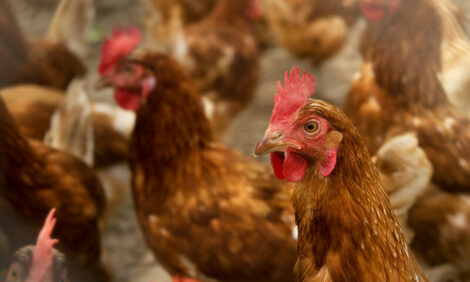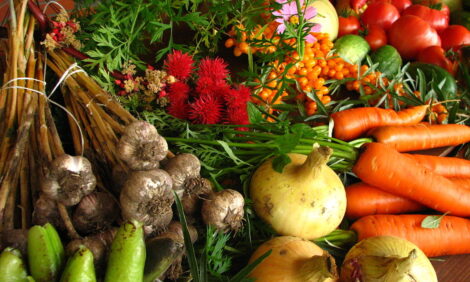



Camelina Meal Has Potential as Feed
US - Sustainable Oils is building markets for camelina oil and meal and sees strong momentum for the new crop. Camelina meal is being tested for broilers and GRAS approval is being sought for cattle and pigs.Sustainable Oils continues to build markets and momentum for the commercial camelina business in Montana, the Pacific Northwest, and southern Canada. The company has secured sales contracts for the camelina oil and camelina meal from its 2008 harvested crop. The harvested camelina seeds are currently being crushed by Montana Specialty Mills in Great Falls, Montana.
Last week, Sustainable Oils leaders briefed Montana Governor Brian Schweitzer and other state officials including Ron de Young, director of Montana Department of Agriculture, and Evan Barrett, chief business officer, on the progress of the company and camelina within the state and across North America.
"We're seeing growing interest and demand for both camelina oil and camelina meal as customers see the opportunities and benefits of the crop," said Scott Johnson, president of Sustainable Oils. "Our goal is to build a strong, sustainable foundation for the camelina industry, and creating markets for both oil and meal is essential."
The jet fuel market has emerged as a strong business opportunity for camelina oil and camelina producers. Johnson said that virtually all of the camelina oil produced by Sustainable Oils in 2009 will be used to produce aviation fuel and green diesel for further market development.
A recent life cycle analysis (LCA) of jet fuel created from camelina seeds conducted at Michigan Tech University in conjunction with UOP, a Honeywell Company, and Sustainable Oils found that the renewable fuel reduces carbon emissions by 80 percent compared to petroleum jet fuel. In January, Japan Airlines (JAL) conducted a successful demonstration flight using a sustainable biofuel primarily produced from camelina.
Sustainable Oils has contracted camelina meal, a by-product of camelina oil extraction, for sale to poultry broiler production. Camelina meal can be a valuable source of protein for livestock and poultry producers. With protein levels of 40 per cent or more, it provides similar overall protein as soybean meal with the added benefits of camelina's unique amino acid and fatty acid profile.
The company is working with other members of the North America Camelina Trade Association (NACTA), to secure regulatory approvals for feeding camelina meal. Earlier this year, the FDA issued a letter allowing the use of camelina meal in the diets of broilers up to 10 per cent of the weight of the total ration. NACTA members are working with the FDA and the American Association of Feed Control Officials (AAFCO) to secure "Generally Recognized as Safe" certification for poultry and additional livestock species such as swine, beef cattle and dairy cattle.
"We're excited about the 2009 camelina crop that is currently planted across Montana and southern Canada," said Mr Johnson. "We received an excellent response from growers this year and are looking forward to offering contracts for significantly more acres in 2010."
Growers who are interested in additional information or contracting opportunities for the 2010 growing season should register on the Sustainable Oils web site [click here].











